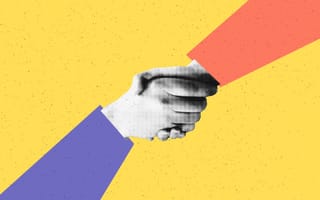Data makes all the difference when it comes to closing deals in sales.
Just ask Megan Beatty, a commercial account executive at Rapid7. Customer data is at the core of the sales org, informing how she and her teammates prioritize accounts, tailor outreach and accurately forecast.
To dive into the data, Beatty’s team relies on a robust tech stack defined by tools like Gong, which has helped her refine her outreach and execution skills by enabling her to analyze call insights and buyer engagement signals across the funnel. She shared that tools like Gong have made it easier for her to understand prospects — and close more deals.
This came into play recently when Beatty found out that a prospect was using a competitor’s product. Using one of the tools in her team’s tech stack, she gained the data she needed to make the customer feel confident in their decision to switch to Rapid7.
Data has enabled Beatty and her teammates at Rapid7 to thrive in their roles, creating a sales org she described as “focused, agile and equipped to win with consistency.”
Read on to see what else Beatty had to say about the tools she and her peers use most in their daily work and the role data plays in driving success on her team.
About Rapid7
Powered by real-time threat intelligence and AI-driven insight, Rapid7’s cybersecurity platform is designed to enable businesses to stay ahead of cyberattacks and respond to threats more quickly.
Tell us about your tech stack. What tools do you use to gather and organize data, and which tools do you rely on most in your daily work?
At Rapid7, I’m equipped with a tech stack that makes every stage of the sales process more strategic and efficient. I rely on Gong to guide both my outreach and deal execution, from building personalized cadences to analyzing call insights and buyer engagement signals across the funnel. 6sense helps me identify and prioritize accounts showing real intent, while ZoomInfo fills in the blanks with critical contact and company details. LinkedIn Sales Navigator keeps me informed of org changes and provides an avenue for warm, relevant outreach. I also use Sendoso to add a personal touch, like sending a timely gift or handwritten note to deepen relationships. These tools work together to ensure I’m spending time where it matters most, on the right accounts, with the right message, at the right moment.
“These tools work together to ensure I’m spending time where it matters most, on the right accounts, with the right message, at the right moment.”
How has data helped you close a deal?
In a recent deal, I found out early that the prospect was using a competitor we frequently replace. I set up keyword tracking in Gong to notify me of mentions of that competitor across the sales org. This gave me direct insight into how they were positioning themselves and where customers were frustrated. I pulled win stories from similar accounts and adjusted my talk track to focus on the exact gaps we were hearing. It allowed me to be better prepared at handling objections and even get ahead of them. This level of insight helped the customer feel confident in making the switch to Rapid7.
How does sales and customer data enhance Rapid7’s sales org? What data do you find most important in the sales process?
Sales and customer data is at the core of how our sales org operates at Rapid7. It drives how we prioritize accounts, tailor outreach and forecast with accuracy. Intent signals help us align teams around which accounts are actually in-market, while engagement data lets us see where to double down and where support may be needed. Competitive intel also plays a big role across the team. If we know an account uses a competitor we frequently displace, reps can adjust their strategy early in the cycle. Data also strengthens collaboration across functions, whether it’s syncing with marketing on target accounts or providing feedback to product teams. The result is a sales org that’s focused, agile and equipped to win with consistency.







